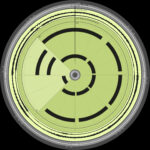The E minor (Em) chord is a foundational chord for guitarists of all levels, especially beginners. It’s known for its slightly melancholic yet versatile sound, making it a staple in countless songs across genres. Fortunately, the Em chord is also one of the easiest guitar chords to learn, requiring just two fingers to play. This guide will walk you through everything you need to know about playing the E minor chord on your guitar, from finger placement to practice tips and how it relates to other chords.
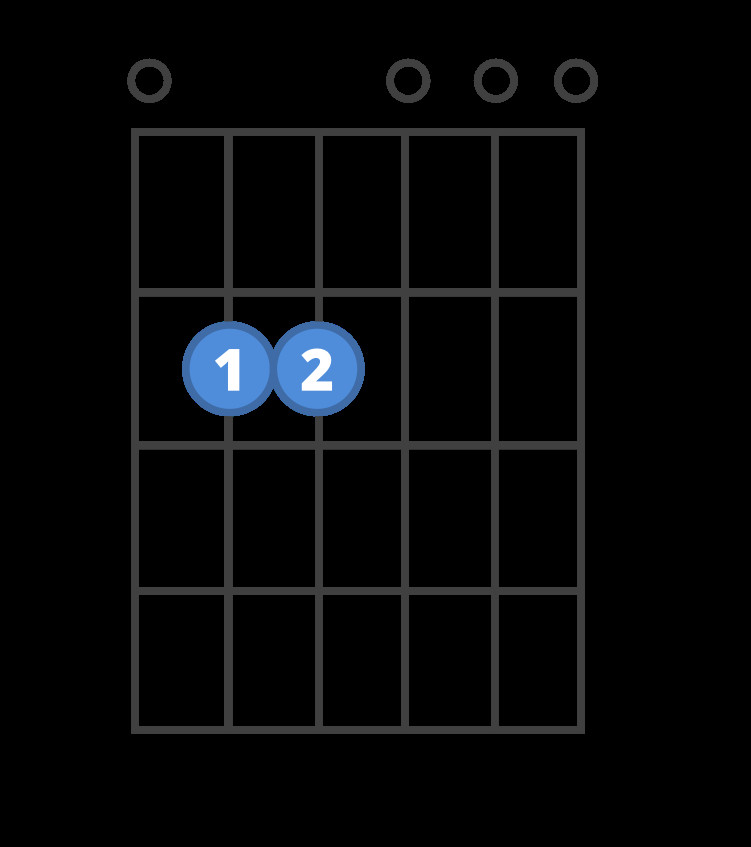 Chord diagram for the Em guitar chord.
Chord diagram for the Em guitar chord.
Understanding the E Minor Chord
Before diving into finger positions, let’s briefly understand what makes the Em chord unique.
What is a Minor Chord?
In music theory, chords are built from combinations of notes. A minor chord, like E minor, has a characteristic “minor” sound that is often described as sad, somber, or reflective, in contrast to the brighter sound of major chords. This difference in sound comes from the intervals between the notes in the chord.
Why Learn the Em Chord?
The E minor chord is incredibly useful for several reasons:
- Beginner-Friendly: As mentioned, it’s easy to fret, making it a great first minor chord to learn.
- Common in Many Songs: You’ll find the Em chord in a vast array of popular songs across genres like rock, pop, folk, and blues. Learning Em opens up a huge song repertoire.
- Foundation for Other Chords: Understanding the Em chord shape can help you learn other minor chords and chord variations down the line.
How to Play the E Minor Chord (Step-by-Step)
Here’s a simple, step-by-step guide to forming the E minor chord:
- Identify the Strings: Hold your guitar in the playing position. The thickest string is the 6th string (E string), and the thinnest is the 1st string (also E string, but higher pitch). We’ll be focusing on the 4th and 5th strings.
- Place Your Second Finger: Locate the 5th string (A string). Place your second finger (middle finger) on the 2nd fret of this string. Press down just behind the metal fret to get a clear sound.
- Place Your Third Finger: Now, find the 4th string (D string). Place your third finger (ring finger) on the 2nd fret of this string. Again, ensure you’re pressing just behind the fret.
- Strum All Six Strings: Using a pick or your thumb, strum all six strings of the guitar. You should hear a clear and resonant E minor chord.
Finger Placement Diagram:
| String | Finger | Fret |
|---|---|---|
| 6th (E) | – | Open |
| 5th (A) | 2nd Finger | 2nd Fret |
| 4th (D) | 3rd Finger | 2nd Fret |
| 3rd (G) | – | Open |
| 2nd (B) | – | Open |
| 1st (e) | – | Open |
Why Use the 2nd and 3rd Fingers?
You might wonder if you can use your first and second fingers instead. While technically possible, using your second and third fingers is generally recommended for beginners. This fingering leaves your first finger free and available to quickly transition to other common chords like C major, A minor, or D major, which are often used in conjunction with Em in songs. This efficient finger positioning will make chord changes smoother as you progress.
Em Chord Diagram Explained
Chord diagrams are visual representations of guitar chords. Let’s break down the Em chord diagram to ensure you understand it fully:
- Vertical Lines: Represent the strings of your guitar. The rightmost line is the 6th string (thickest), and the leftmost line is the 1st string (thinnest).
- Horizontal Lines: Represent the frets. The top line is the guitar nut (fret zero), and the numbers to the left indicate the fret number.
- Numbers or Dots: Numbers on the diagram indicate which finger to use (1=index, 2=middle, 3=ring, 4=pinky). A dot without a number typically implies using any suitable finger. In the Em chord diagram, dots with “2” and “3” tell you where to place your middle and ring fingers.
- “X” above a String: Means you should not play that string. In the Em chord, there are no “X”s, indicating all six strings are played.
- “O” above a String: Means to play that string “open,” meaning you strum the string without fretting any notes on that string. The Em chord has “O”s above all strings, except where your fingers are placed, implicitly meaning those open strings are part of the chord.
 Chord diagram for the Em guitar chord.
Chord diagram for the Em guitar chord.
Practice Tips for Mastering the Em Chord
Consistent practice is key to mastering any guitar chord. Here are some effective practice techniques for the Em chord:
-
The On-Off Drill: This exercise helps build muscle memory and accuracy.
- Place your fingers in the Em chord shape.
- Strum the chord four times slowly and steadily.
- Remove your fingers from the strings completely for four counts.
- Replace your fingers back into the Em chord shape and strum again.
- Repeat this cycle several times.
This drill trains your hand to quickly and accurately form the chord shape.
-
Chord Switching Practice: Once you can play the Em chord cleanly, practice switching between Em and other chords you know. Good chords to practice switching with from Em include:
- G Major: Em and G are frequently paired together in songs.
- C Major: Another very common chord.
- D Major: Forms a classic chord progression with Em and G.
- A Minor (Am): Creates a minor key progression with Em.
Start slowly, focusing on clean transitions. Gradually increase your speed as you become more comfortable.
-
Strumming Patterns: Practice strumming the Em chord with different rhythms and strumming patterns. Experiment with downstrokes, upstrokes, and combinations to develop your strumming hand technique.
Songs that Use the E Minor Chord
The Em chord is incredibly versatile and appears in countless songs. Here are a few examples to get you started playing along:
- “Knockin’ on Heaven’s Door” – Bob Dylan/Guns N’ Roses: Features a simple progression with Em, G, D, and C.
- “Hallelujah” – Leonard Cohen/Jeff Buckley: Uses Em in its beautiful and moving chord progression.
- “Every Breath You Take” – The Police: Em is part of the iconic intro and verse chords.
- “Wonderwall” – Oasis: Em is a key chord in this popular song.
Listening to these songs and trying to play along is a fun and effective way to practice your Em chord in a musical context.
Expanding Your Chord Vocabulary
Once you’ve mastered the E minor chord, you’ll be well on your way to playing many songs. To further expand your guitar skills, consider learning these other easy minor chords:
- A Minor (Am): Another essential minor chord, also very beginner-friendly.
- D Minor (Dm): Slightly more challenging than Em and Am, but still achievable for beginners.
Learning these additional minor chords, along with the major chords mentioned earlier (G, C, D), will significantly increase your ability to play a wide range of songs and musical styles.
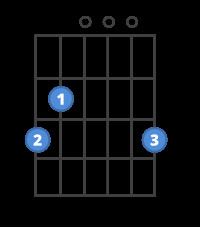 Chord diagram for the G guitar chord.
Chord diagram for the G guitar chord.
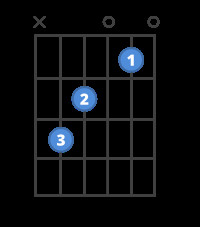 Chord diagram for the C guitar chord.
Chord diagram for the C guitar chord.
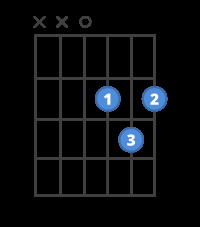 Chord diagram for the D guitar chord.
Chord diagram for the D guitar chord.
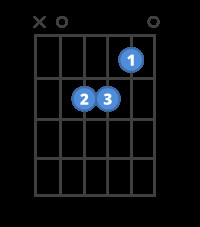 Chord diagram for the Am guitar chord.
Chord diagram for the Am guitar chord.
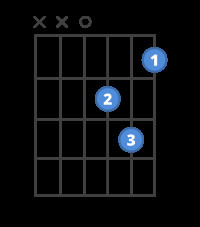 Chord diagram for the Dm guitar chord.
Chord diagram for the Dm guitar chord.
Conclusion
The E minor chord is a fundamental and easy-to-learn chord that unlocks a world of musical possibilities on the guitar. By following the steps in this guide and practicing regularly, you’ll be playing the Em chord confidently in no time. Keep practicing, explore songs that use Em, and enjoy the journey of learning guitar!

